Google’s algorithm is always changing, and keeping up can feel like a full time job. Just when you think you have mastered the rules of search engine optimization, a new update arrives and shifts the landscape. For business owners, this constant evolution can be frustrating. You want your website to show up when customers search for what you offer, but how do you hit a target that is always moving?
The good news is that the core principles of good content remain the same. However, the way Google interprets and ranks that content has become much more sophisticated. In 2025, success is less about keyword tricks and more about providing genuine value to humans.
This guide will walk you through how to write content that not only pleases Google’s latest algorithm but also connects with your audience. We will cover:
- Understanding Google’s focus on user experience.
- Creating content that demonstrates expertise and trust.
- The growing importance of helpful content.
- Practical writing tips for 2025 and beyond.
Understand the Shift: From Keywords to People
For years, SEO was a game of keywords. You would find popular search terms, sprinkle them throughout your page, and hope for the best. While keywords are still important, Google’s algorithm now prioritizes the user’s experience above all else. Think of it this way: Google’s goal is to give people the most helpful and satisfying answer to their questions. If your content does that, you are on the right track.
The Rise of the Helpful Content System
Google’s Helpful Content System is a key part of this shift. It is an automated system designed to reward content that is created for people, not just for search engines. This system analyzes your website as a whole to see if it consistently produces content that is satisfying and useful.
Imagine a user searches for “how to fix a leaky faucet.” They are more likely to find a detailed guide with clear steps, images, and maybe even a video helpful. A page stuffed with the phrase “leaky faucet repair” but offering little practical advice will likely be demoted. Google wants to see that you are an expert who genuinely wants to help.
For example, a local plumbing company could create a blog post that not only explains the steps but also lists the tools needed and suggests when it is better to call a professional. This approach is far more helpful than a simple sales page. This is the kind of content that builds trust and authority, which Google’s algorithm loves.
Demonstrate Your Expertise, Authority, and Trust (E-A-T)
Expertise, Authoritativeness, and Trustworthiness, or E-A-T, is a concept from Google’s quality rater guidelines. While not a direct ranking factor, it is a framework that reflects what the algorithm rewards. Your content needs to show that you know what you are talking about.
How to Build E-A-T with Your Writing
- Write with Authority: Use clear and confident language. Your content should be well researched and accurate. If you are a bakery owner writing about sourdough, share your personal experience, your baking process, and the science behind it. Show your readers you are an expert.
- Cite Credible Sources: When you make a claim or state a fact, linking to a reputable source can boost your credibility. For instance, if you are writing about financial planning, linking to a study from a government site or a respected financial institution adds weight to your advice.
- Showcase Your Credentials: Your website’s “About Us” page is a great place to highlight your team’s experience, certifications, and industry awards. You can also include author bios on your blog posts that introduce the writer and their qualifications. A great example can be found on many articles from authoritative sites like the Mayo Clinic, where medical professionals review the content.
Create Genuinely Helpful Content
What does “helpful content” actually mean? It is content that answers the user’s question completely and leaves them feeling satisfied. It should be original, insightful, and comprehensive.
Go Beyond Surface Level Answers
Think about the user’s entire journey. If someone searches for “best running shoes for beginners,” they probably have follow up questions. They might also want to know about different types of running shoes, how to find the right fit, and what mistakes to avoid. A truly helpful piece of content would address all these related topics in one place.
A running shoe store could create a guide that covers:
- The difference between neutral and stability shoes.
- How to measure your foot size at home.
- Top recommended shoe models with pros and cons.
- Tips for breaking in new shoes.
This comprehensive approach shows Google that your page is a one stop resource, making it more likely to rank highly. For more tips on content strategy, our team at MoDuet can help you build a plan that works.
Write for Humans First, Search Engines Second
Avoid writing in a robotic or unnatural way just to include keywords. Google’s natural language processing capabilities are advanced enough to understand context and synonyms. Instead of repeating “best digital marketing agency in New York,” you can use variations like “top NYC marketing firm” or “leading digital experts in New York.”
Focus on readability. Use short paragraphs, clear headings, and bullet points to break up your text. Make your content easy to scan, as many users will skim an article before deciding to read it fully.
Practical Writing Tips for 2025
Now that we have covered the big picture concepts, let’s get into some practical writing tips you can start using today.
1. Write Clear and Compelling Titles
Your title is the first thing a user sees in the search results. It needs to be clear, accurate, and interesting enough to earn a click. Instead of a generic title like “Business Tips,” try something more specific like “5 Simple Accounting Tips for Small Business Owners.”
2. Craft an Engaging Introduction
The first few sentences of your post are critical. You need to hook the reader and tell them exactly what they will gain from reading your article. State the problem you are solving and give them a reason to keep reading.
3. Structure Your Content with Headings
Use a logical heading structure (H1 for the title, H2 for main sections, H3 for subsections) to organize your content. This not only improves readability for users but also helps search engines understand the structure and key topics of your page. You can learn more about proper heading use from resources like the W3C guidelines.
4. Use Internal and External Links Naturally
Linking to other relevant pages on your own website, known as internal linking, helps users discover more of your content and signals to Google how your pages are related. External links to high quality, relevant sources can enhance your credibility. Just be sure that all links add value for the reader.
5. Prioritize Originality
Google’s algorithm is designed to identify and reward original content. Avoid simply rewriting what is already on the first page of search results. Instead, add your unique perspective, experience, or data. Conduct a survey, share a personal case study, or interview an expert to create something new and valuable.
Conclusion: Focus on Value
Writing for Google in 2025 and beyond is about returning to the fundamentals of good communication. It is about understanding your audience, sharing your expertise, and creating content that genuinely helps people. By focusing on providing real value, you will not only satisfy the algorithm but also build a loyal audience that trusts your brand.
Stop chasing algorithm updates and start creating high quality, helpful content. This people first approach is the most sustainable and effective SEO strategy for long term success.
If you are looking to create a content strategy that drives results, contact MoDuet today. Our team can help you craft content that resonates with your audience and climbs the search rankings.
We Want To Talk To You About Your Marketing Goals.
Let’s Supercharge Your Online Growth!











